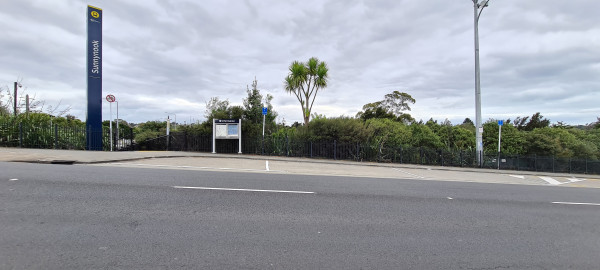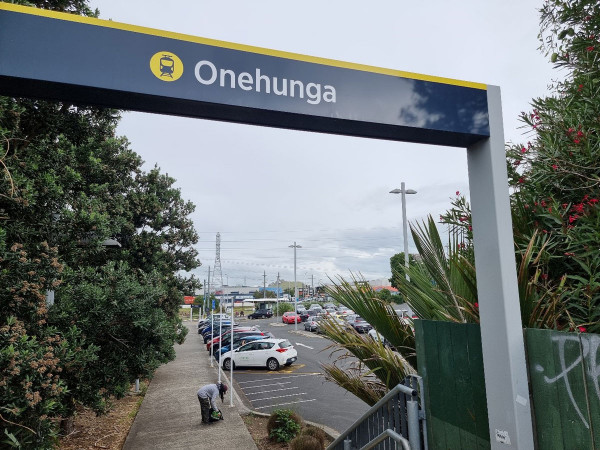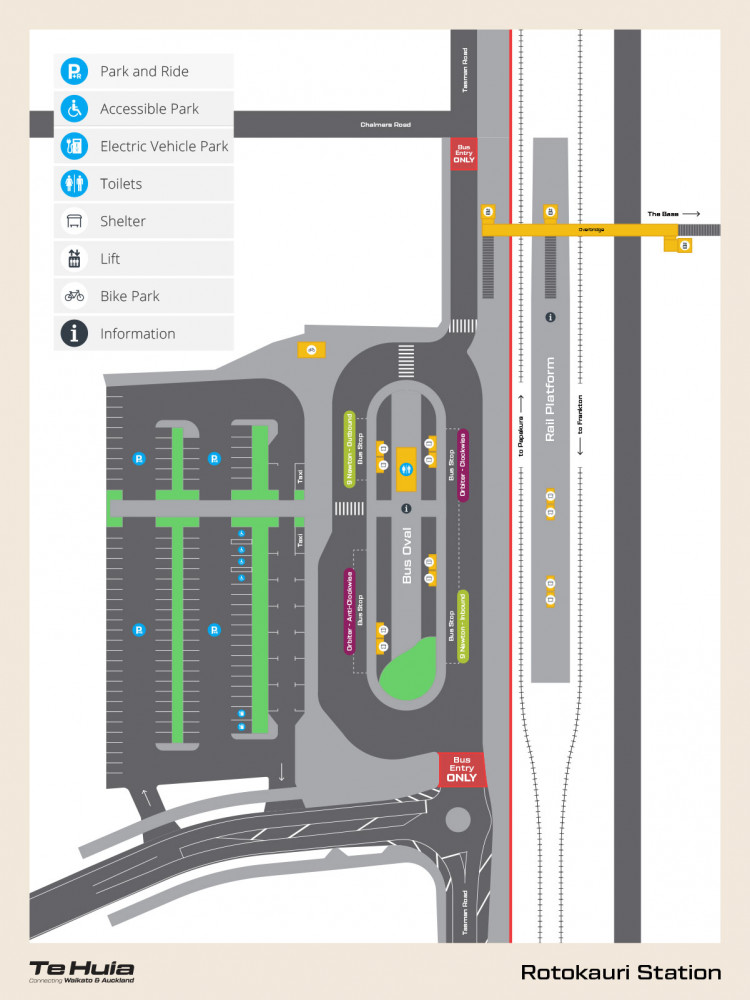The access hierarchy emphasises that walking, cycling, micromobility and to a lesser degree, feeder services are the preferred ways for people to get and from public transport from an environmental and economic perspective.
Public transport access hierarchy
However, in some contexts there is a case for providing access for car trips to and from the stop or station:
- Providing drop-off/pick up access for private or shared passenger vehicles in a way that does not compromise access for other modes. This may be particularly relevant in areas where feeder or even on-demand services are unviable.
- Providing parking spaces to store private vehicles at stations. Whilst this is a relatively high cost, low value use of land it may be appropriate where demand for alternate land uses is currently low, particularly if it is designed as an interim measure that retains the potential for subsequent re-purposing.
Short stay vehicle access for drop-offs is an important way to provide access to some public transport stations.
This provides crucial access for people with limited mobility. It also extends the reach of public transport for people who choose not to walk, cycle, or use micromobility devices and do not have access to feeder services.
‘Drop-off’ comes in two primary forms:
- ‘kiss and ride’ (that is, drop-off areas where drivers stop for just a few seconds) and
- on-demand services, such as taxis and ride-share. Drop-off facilities can help extend the reach of public transport without the high costs associated with providing all day parking, due to higher turnover of each vehicle space.
The growing demand for app-based ride-hailing may increase pressure on drop off areas and surrounding kerb space.
Drop-off facilities are most suited to premium public transport stations with large catchments that are not entirely covered by feeder public transport services. They are less suited to busy town and regional centre stations where they would displace other land uses or create a traffic barrier between the station and other destinations. They can however, be accommodated with proactive urban design to minimise severance or other adverse issues.

Example of on-street drop-off with 5 minute parking at Sunnynook Station, Auckland (Credit Catherine Yung)

Example of a within-interchange drop off and pick up, Auckland (Credit Catherine Yung)

Park and ride by Onehunga Station with dedicated (Cityhop) space (Credit: Thomas Chu)
Providing park and ride facilities so people can travel the first and last mile (at one end of their trip) in their own vehicle is generally considered a less effective and the most expensive access option for transport agencies.
Some of the key drawbacks include:
- It can make other more efficient modes (such as walking, cycling and micromobility) less attractive due to the presence of busy circulating roadways adjacent to the station.
- In some locations park and ride may have limited benefit for attracting new public transport patronage – many park and ride users would continue to use public transport without the parking facilities by getting to the station with a different mode.
- It is expensive to build and maintain.
- It may take up high-value land, removing the opportunity to increase land use density around the transit stop which would potentially support higher patronage.
- It surrounds the station with under-utilised space, which pushes active land uses further away and may impact on feeder services.
- It increases local traffic and may induce local congestion and create a traffic barrier between the station and adjacent destinations.
- It may exacerbate undesirable urban sprawl.
However, providing parking facilities can have benefits, namely:
- Extending the reach and catchment for public transport, particularly where that catchment includes rural areas without feeder services.
- In some instances, increasing public transport patronage.
- Reducing broader network congestion by replacing longer car journeys with public transport journeys.
Designing a Park and Ride
Considerations for the design of a park and ride facility include:
- Providing the most convenient facilities for people with the fewest alternatives, ie, accessible parking spaces;
- Prioritising access to and through stations for people arriving by walking, cycling or micromobility devices above those who park and ride.
- Prioritising relatively efficient and sustainable travel choices, such as spaces for carpooling, carshare*, or charging for electric vehicles;
- Protecting feeder bus operations or rail replacement services from park and ride congestion;
- Providing safe and secure access for people to walk from their cars to the bus or train platforms, with good lighting and surveillance;
- Setting parking fees to optimise parking utilisation at close to 95% of capacity and potentially splitting into functionality areas based on different periods of time/ costs people would be interested on leaving their vehicles in;
- Setting at least a nominal parking fee from the outset and noting that it is subject to review based on demand, can help to manage expectations for future reviews of pricing levels; and
- Managing on-street parking demand with time restrictions and fees to discourage spillover effects or to create incentives (eg around car-share, electric vehicles).
Monitoring the uptake of a park and ride can help with an overall public transport planning approach to promote an effective and integrated public transport network.
*See 'carshare' definition in the glossary

Park and Ride near the new Te Huia rail service connecting Hamilton and Auckland
Temporary Park and Ride facilities
Recently in New Zealand there has been consideration about whether to implement temporary park and rides at some newly developed railway stations. While this may help attract some people to use the new railway stations, there is some risk that it will be hard to remove in the future and could create a precedent of parking provision at the station, leading to pressure to develop additional parking rather than more beneficial land development.
It is recommended that charging for temporary park and ride facilities be strongly considered. This can support better understanding of the value of the land, enable demand management and increase the attractiveness of alternative modes for access.



